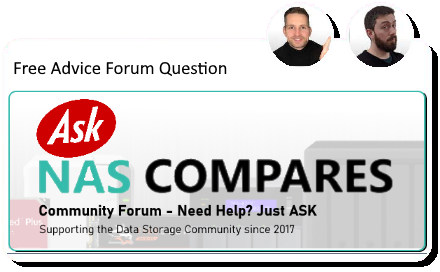05-23-2025, 10:21 AM
Thanks for your question — it’s a really common dilemma when building or choosing a NAS.
You’re right that ECC memory and transcoding capabilities often don’t come together easily in prebuilt NAS units, and the DIY route can feel overwhelming with all the CPU and motherboard options.
Pairing a Synology NAS like the DS1522+ or DS1525+ (which supports ECC but has limited transcoding) with a dedicated transcoding device like an Xima board is actually a clever idea. This hybrid approach lets you get the best of both worlds:
The Synology handles your storage, data protection (with ECC), and NAS features.
The Xima board takes care of transcoding efficiently without overloading your NAS CPU or increasing power consumption drastically.
This can be more power-efficient and flexible compared to going all-in on a power-hungry CPU that tries to do both.
That said, there are some caveats:
You’ll have to manage two devices, which adds complexity.
Integration and seamless streaming depend on how well you set up your media server (e.g., Plex or Jellyfin) to offload transcoding tasks.
Budget-wise, the combined cost may add up depending on the hardware.
If you’re comfortable with some networking and media server configuration, it’s a smart approach.
I’ll consider making a detailed video on this concept soon, as it’s an excellent topic that many users ask about.
You’re right that ECC memory and transcoding capabilities often don’t come together easily in prebuilt NAS units, and the DIY route can feel overwhelming with all the CPU and motherboard options.
Pairing a Synology NAS like the DS1522+ or DS1525+ (which supports ECC but has limited transcoding) with a dedicated transcoding device like an Xima board is actually a clever idea. This hybrid approach lets you get the best of both worlds:
The Synology handles your storage, data protection (with ECC), and NAS features.
The Xima board takes care of transcoding efficiently without overloading your NAS CPU or increasing power consumption drastically.
This can be more power-efficient and flexible compared to going all-in on a power-hungry CPU that tries to do both.
That said, there are some caveats:
You’ll have to manage two devices, which adds complexity.
Integration and seamless streaming depend on how well you set up your media server (e.g., Plex or Jellyfin) to offload transcoding tasks.
Budget-wise, the combined cost may add up depending on the hardware.
If you’re comfortable with some networking and media server configuration, it’s a smart approach.
I’ll consider making a detailed video on this concept soon, as it’s an excellent topic that many users ask about.





